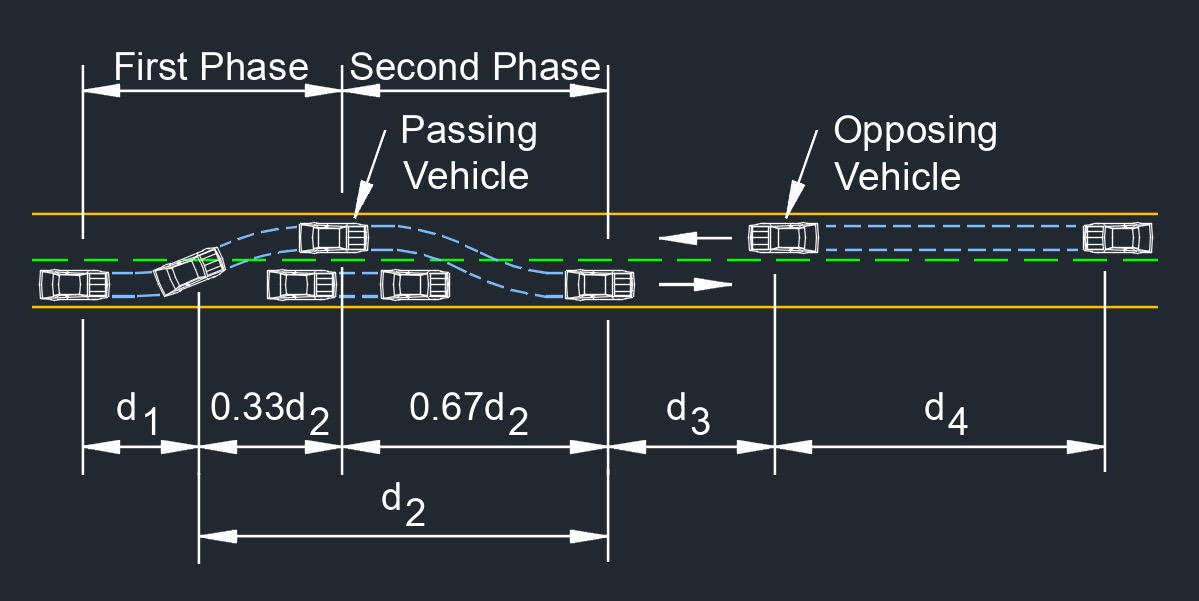Distance While Passing Vehicle Occupies Left Lane
Distance While Passing Vehicle Occupies Left Lane Formulas |
||
|
\( d_2 \;=\; \dfrac{ \bar {u} \cdot t_2 }{ 0.68 }\) \( d_2 \;=\; 1.47 \cdot \bar {u} \cdot t_2 \) |
||
| Symbol | English | Metric |
| \( d_2 \) = distance while passing vehicle occupies left lane | \(ft\) | \(m\) |
| \( \bar {u} \) = average speed of passing vehicle | \(ft\;/\;sec\) | \(m\;/\;sec\) |
| \( t_2 \) = time the passing vehicle occupies the left lane | \(sec\) | \(s\) |
Distance while passing vehicle occupies left lane, abbreviated as \(d_2\), is the passing distance that a vehicle occupies in the left lane of a road while overtaking or passing another vehicle. This concept is also related to traffic engineering and road safety, particularly in situations where vehicles are traveling on multi-lane roads. When a vehicle is passing another vehicle that is traveling at a slower speed, it often moves into the left lane (or a lane to the left of the slower vehicle) in order to overtake it. The "distance while passing" refers to the length of road that the overtaking vehicle remains in the left lane as it completes the passing maneuver.

Drivers Should Follow Safe Passing Practices
- Ensuring they have a clear view of the road ahead and the space needed to complete the pass.
- Indicating their intention to pass using turn signals.
- Checking for oncoming traffic and checking their blind spots before moving into the left lane.
- Accelerating sufficiently to complete the pass quickly and safely.
- Leaving enough space between the overtaken vehicle and their own vehicle when returning to the right lane.
Ultimately, the goal is to complete the passing maneuver efficiently while minimizing the time spent in the opposing lane, reducing the risk of collisions and maintaining a safe flow of traffic.

